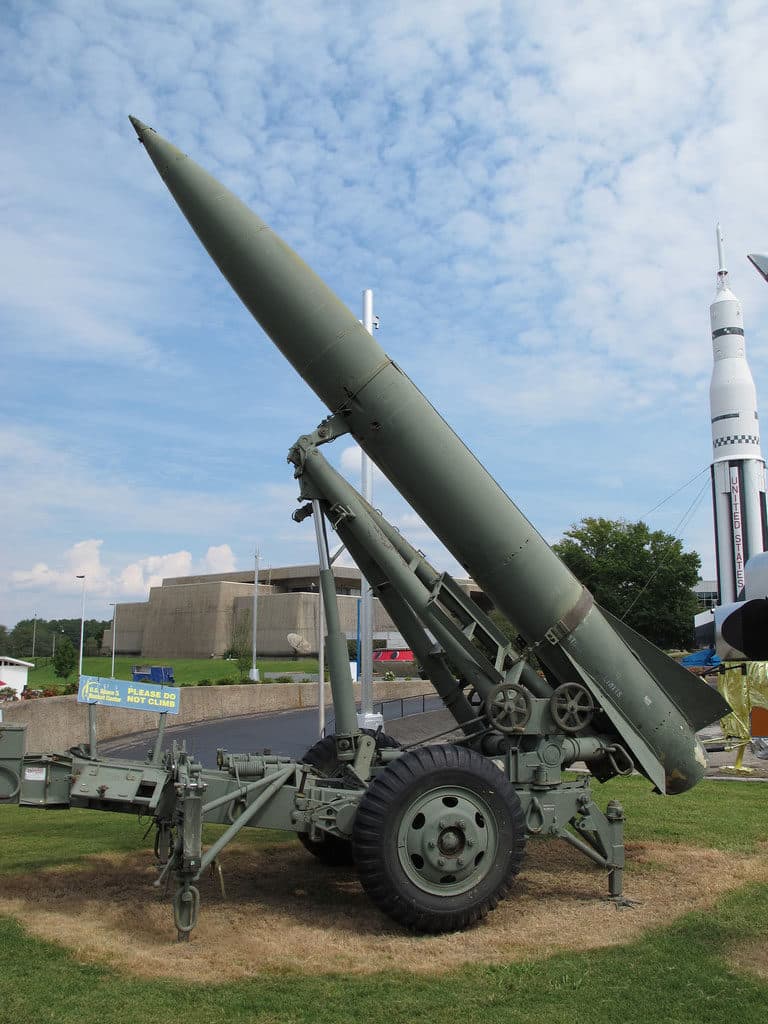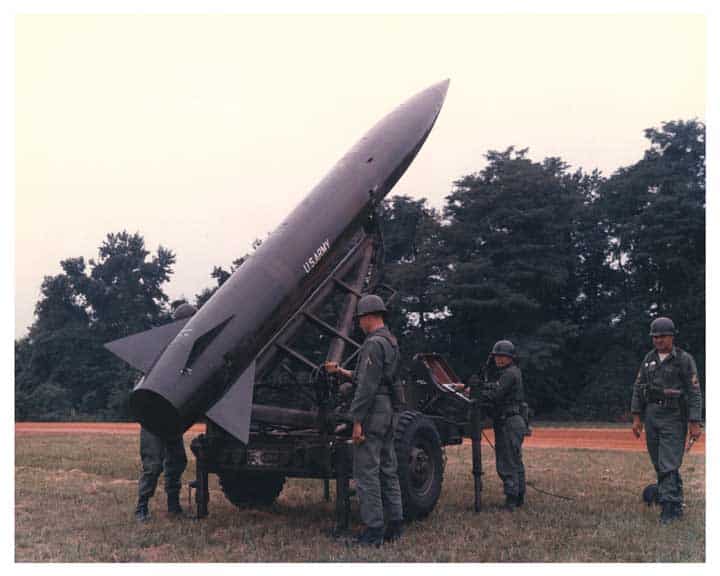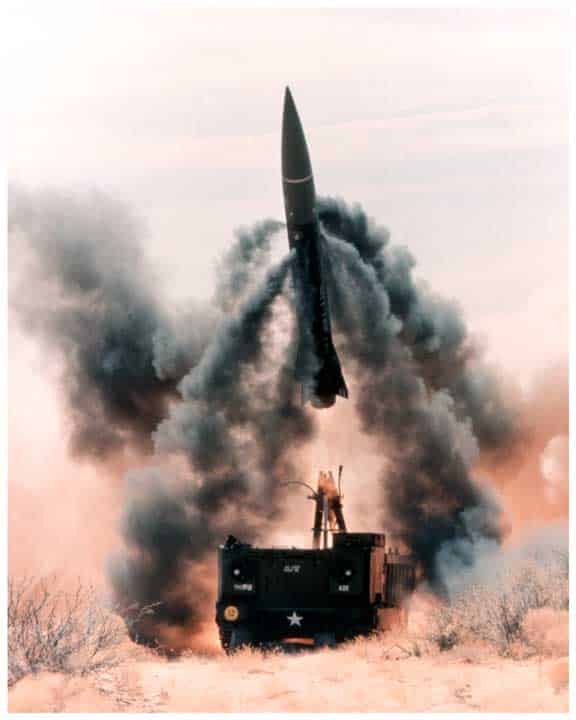The MGM-52 Lance was a road-mobile, short-range ballistic missile designed by the United States. First deployed in 1972, it served in Europe and South Korea, functioning primarily as a delivery vehicle for battlefield nuclear weapons.
Lance at a Glance
- Originated From
- United States
- Class
- Short-range Ballistic Missile (SRBM)
- Possessed By
- Belgium, Germany, Israel, Italy, Netherlands, United Kingdom, United States
- Basing
- Road mobile, vehicle-based
- Length
- 6.1 m
- Diameter
- 0.56 m
- Launch Weight
- 1,527 kg
- Payload
- Single warhead
- Warhead
- W-70, 100 kT nuclear, W-70-3 neutron, HE (unitary / submunitions)
- Propulsion
- Single-stage, liquid propellant
- Range
- 130 km
- Status
- Obsolete
- In Service
- 1972-1992

Lance missile on display at the U.S. Space & Rocket Center. Photo: Kelly Michals, Flickr 
Lance missile with operators. Photo: U.S. Army 
Lance missile in early launch. Photo: U.S. Army
MGM-52 Lance Development
The Lance was designed as a replacement to the Sergeant and Honest John tactical ballistic missiles. The Lance went into development at the Ling-Temco-Vought Aerospace Corporation in 1962 and began testing in 1965.1
Initial flight tests took place in 1965, but the missile’s range could only achieve distances between 4-40 km. The Army began building an extended range variant in 1966. The United States ordered 55 test models in 1970 and began full production in 1972.2 The Lance entered service with the U.S. Army in 1972 and was produced until 1980.
The Lance’s short range limited it to tactical battlefield missions. The missile would likely have been used to attack concentrated troops, command facilities, and military bases; but due its large nuclear yield, it would likely have caused major collateral damage.3 The neutron bomb warhead variant was developed for use against military units, particularly armored tank battalions, as the increased radiation yield could harm crews through armor plating. High explosive (HE) warheads were also developed to allow for non-nuclear deployment, though only the submunition warheads were feasible against military maneuver units due the missile’s accuracy. The mobility of the M752 Lance transporter-erector launcher (TEL) vehicle enabled it to keep up with units in the front and also avoid attacks. The TEL was typically accompanied by reload vehicles carrying two extra missiles.4
Specifications
The Lance missile had a range of 130 km. Its inertial guidance system gave it an accuracy of around 150 m CEP. The missile could be equipped with a single W70 100 kT yield warhead, as well as an enhanced radiation (neutron bomb) W70-3 version. It could alternatively carry conventional HE warheads, with both unitary and submunition types. The missile was 6.41 m long, 0.56 m in diameter, and had a launch weight of 1,527 kg. It had a single-stage liquid propellant design.5
Service History
In 1990, the United States deployed 88 Lance launchers, 300 HE warheads, and 700 nuclear warheads throughout Europe in NATO nations and in South Korea.6
In 1991, the Presidential Nuclear Initiative took effect and all Lance nuclear warheads were withdrawn to the United States and dismantled by 1993.7
The United States exported conventional variants of the missile system to Belgium, Germany, Iran, Israel, Italy, Netherlands, and the United Kingdom.
Lance in BMD
Between 1986 and 2015, the U.S. Army used decommissioned Lance missiles as target vehicles to test missile defense systems. Notably, the missile assisted in the testing of the first PAC-1 and PAC-2 systems and the development process of early kinetic hit-to-kill missile defense systems through the Flexible Lightweight Agile Guided Experiment (FLAGE) tests in 1987. The Lance has also been used for ERINT, Hawk, TMD, MEADS, PAC-3 Patriot, and Aegis Combat System testing.8
Footnotes
- David Baker, The Rocket: The History and Development of Rocket & Missile Technology (New York: Crown Publishers, 1978), 238.
- Ibid, 238.
- Baker, 238.
- Lennox.
- Duncan Lennox,“MGM-52 Lance” in Jane’s Strategic Weapon Systems (Offensive Weapons) (London: IHS Global, 2011.)
- “NATO to Scrap Plans for New Short-Range Missile,” Los Angeles Times, April 3, 1990.
- Susan Koch, The Presidential Nuclear Initiatives of 1991-1992 (Washington D.C.: National Defense University Press, 2012), 11.
- Sharon Lang, “SMDC History: Lance missile concludes second career,” https://www.army.mil/article/153462/SMDC_History__Lance_missile_concludes_second_career, accessed January 6, 2017.